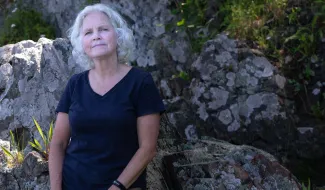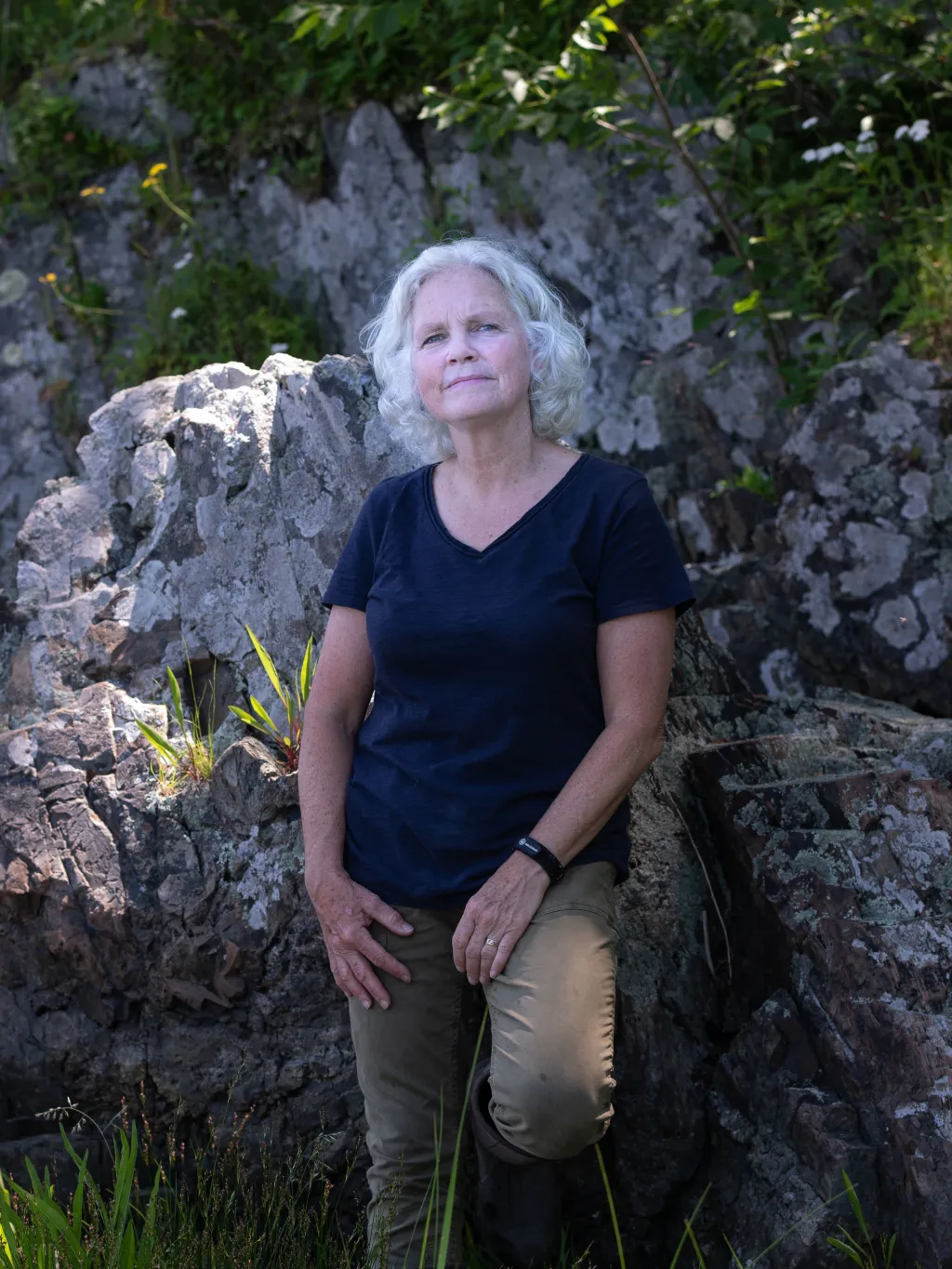
Pam Morgan, a professor of environmental studies, engaged students in the research around UNE's Biddeford Campus.
A University of New England professor of environmental studies is among a global team of scientists who have co-authored a groundbreaking study examining how climate change influences the ability of wetlands to store carbon.
UNE’s Pam Morgan, Ph.D., is part of an international team of 110 scientists involved in the research, led by Stacey M. Trevathan-Tackett, Ph.D., a faculty member at RMIT University in Melbourne, Australia, as part of an Australian Research Council DECRA Fellowship while at Australia’s Deakin University.
The study, recently published in Environmental Science and Technology, utilized a novel method involving tea leaves to study carbon sequestration in wetland ecosystems across 28 countries.
The researchers deployed over 19,000 tea bags — both green and rooibos — to analyze carbon decomposition rates in 180 wetlands worldwide. It was the first usage of tea bags — a proven proxy method to measure carbon release from soil into the atmosphere — in a large-scale, long-term study, the researchers said.
By burying bags and measuring their organic mass after varying periods, researchers gained insights into how climate, habitat, and soil type interact to influence carbon storage capacity.

Pam Morgan, Ph.D.
The findings reveal that warmer temperatures generally accelerate the decay of organic matter, leading to a reduced ability of wetlands to act as carbon sinks. However, the effects varied by wetland type, with freshwater and tidal marshes showing greater potential for carbon storage compared to other ecosystems.
“Changes in carbon sinks can significantly influence global warming – the less carbon decomposed means more carbon stored and less carbon in the atmosphere,” Trevathan-Tackett said. “This data shows us how we can maximize carbon storage in wetlands globally.”
For her portion of the study, Morgan engaged undergraduate student researchers in UNE’s 363-Acre Forest — a natural, living laboratory located just steps from the University’s oceanfront campus in Biddeford — and in the adjacent salt marshes.





Pam Morgan (top right) and then-undergraduate researcher Carmen Dancy, B.S. ’20 (Environmental Science and Biological Sciences) conduct research in the Biddeford Pool marshlands on campus as part of a global study using tea bags to measure the release of carbon from the soil into the atmosphere. Photos courtesy of Pam Morgan.
“Seeing how these wetland sites fit into this big, global project was a great experience for the undergraduate student researchers who participated over the three years of the study,” said Morgan, a faculty member in the School of Marine and Environmental Programs.
Results from this work not only enhance understanding of carbon storage mechanisms in wetlands but also contribute to predictive models that can inform conservation strategies worldwide, the authors said.
This collaboration showcases the University’s commitment to addressing pressing environmental issues through meaningful research, scholarship, and global partnerships.
“This study provides important information that can be used to help keep the huge amount of carbon stored in the world’s wetlands in the ground,” Morgan said. “This is an essential piece of the puzzle if we want to avoid the worst impacts of climate change.”